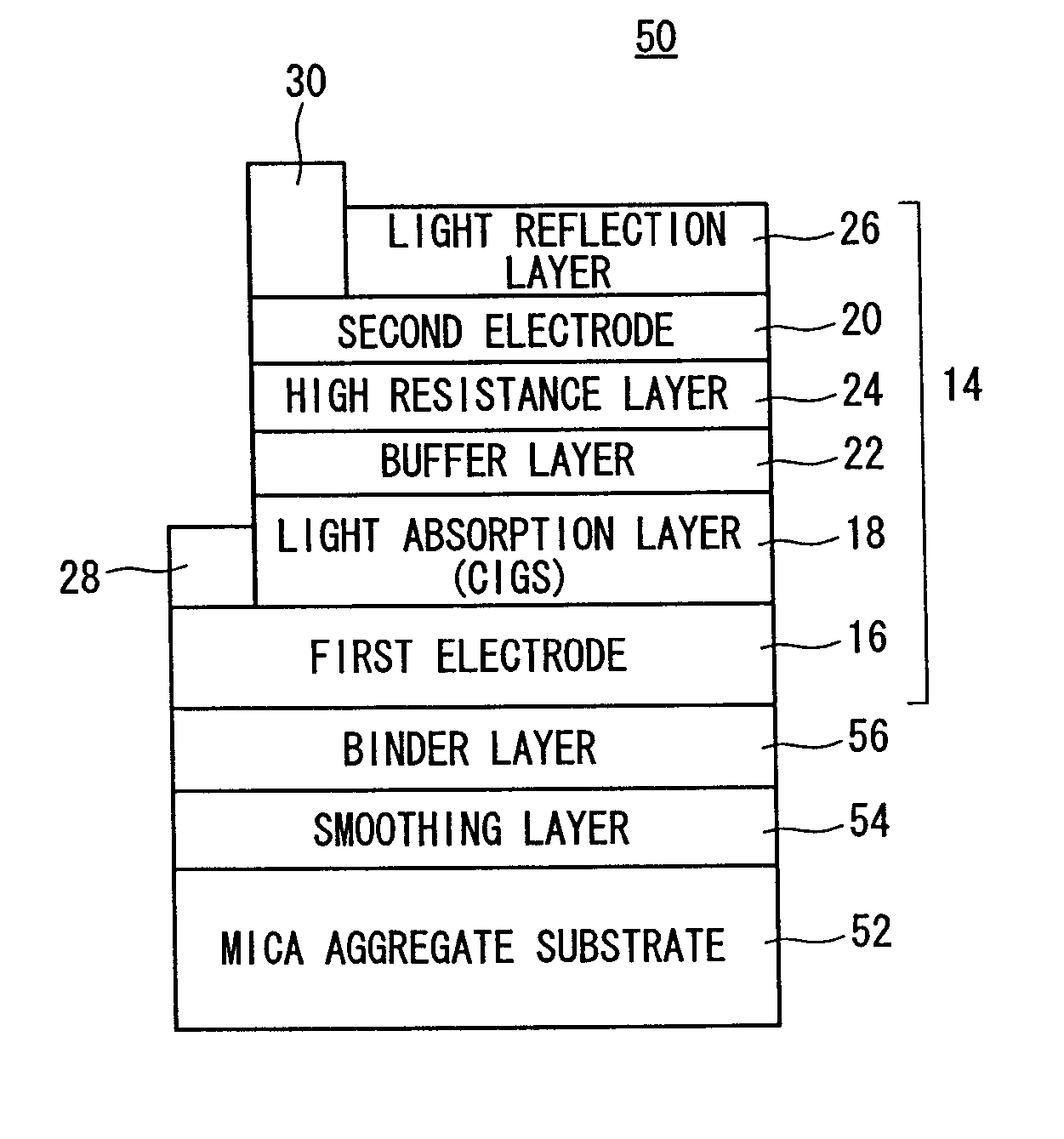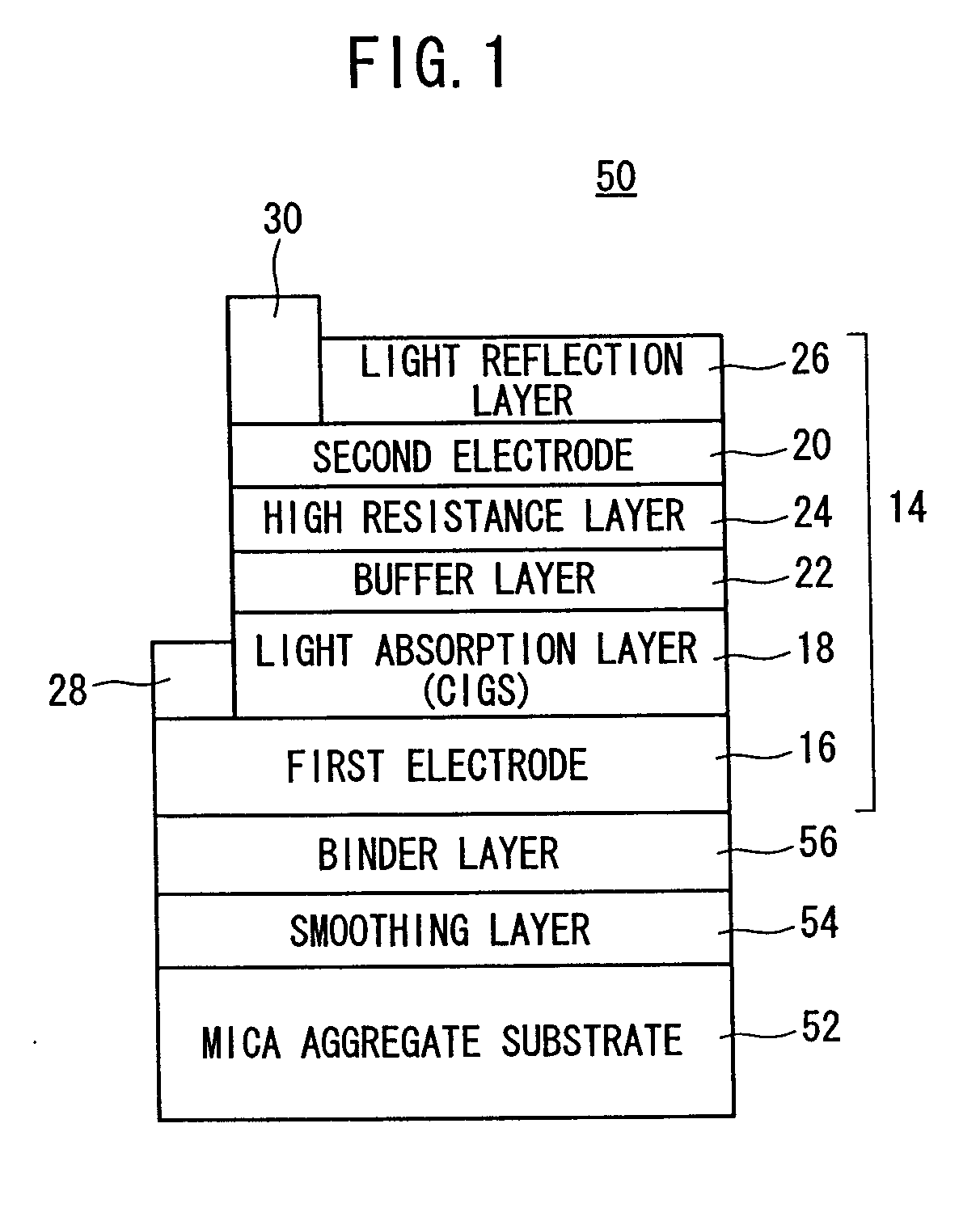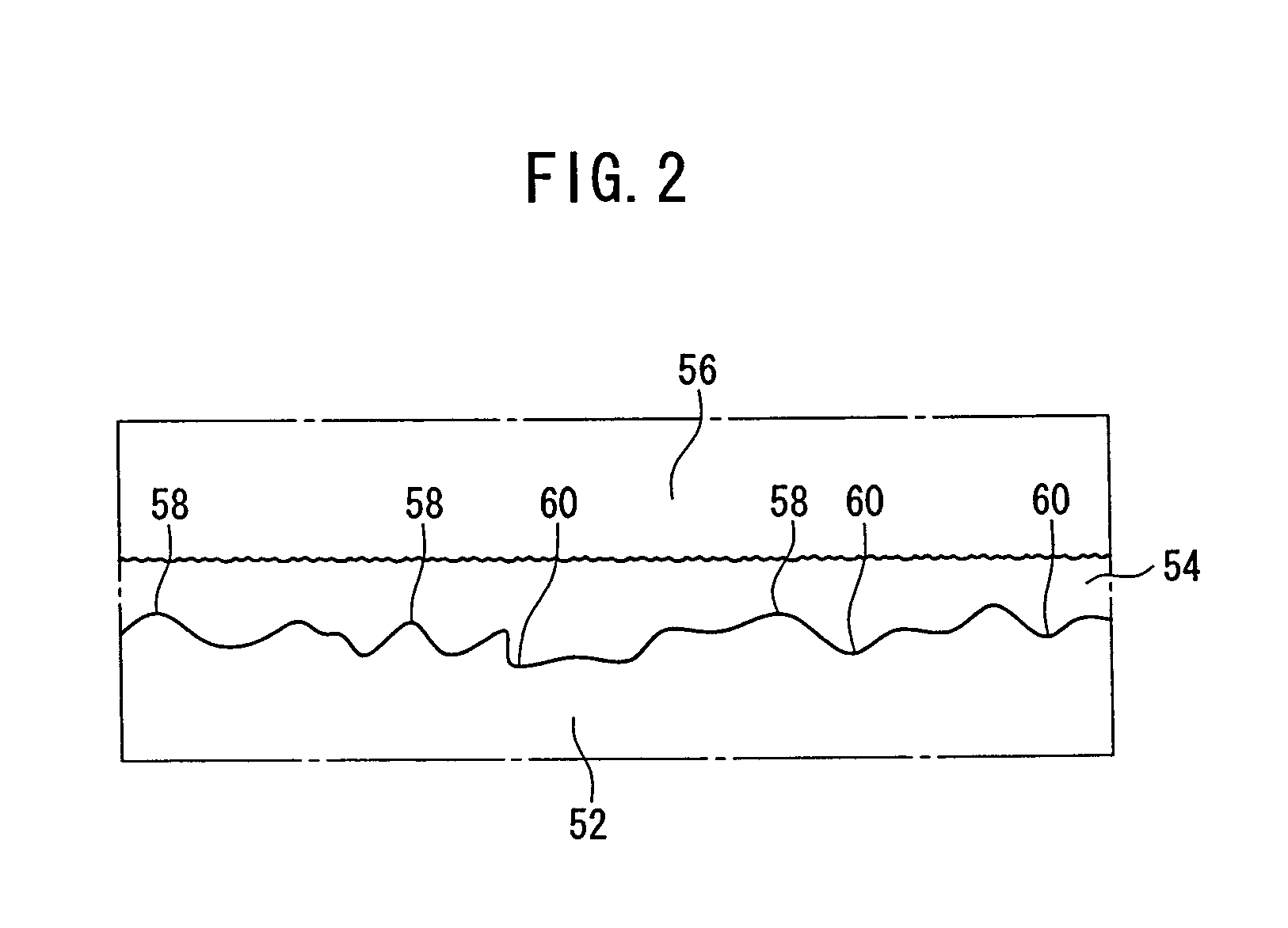Chalcopyrite Type Solar Cell
a solar cell and chalcopyrite technology, applied in the field can solve the problems of difficult selenide formation, high temperature cannot be used, and large energy efficiency of high temperature, and achieve the effect of increasing the open circuit voltage of chalcopyrite type solar cells
- Summary
- Abstract
- Description
- Claims
- Application Information
AI Technical Summary
Benefits of technology
Problems solved by technology
Method used
Image
Examples
Embodiment Construction
[0042] A chalcopyrite type solar cell according to the present invention shall be explained in detail below with reference to the accompanying drawings, which exemplify preferred embodiments of the invention. Constitutive components, which are the same as those shown in FIG. 5, shall be designated using the same reference numerals, and detailed explanation thereof shall be omitted.
[0043]FIG. 1 is a schematic vertical sectional view illustrating a chalcopyrite type solar cell 50 according to an embodiment of the present invention. The chalcopyrite type solar cell 50 comprises a substrate 52, a stack 14, together with a smoothing layer 54 and a binder layer 56, which are interposed between the substrate 52 and the stack 14.
[0044] In this embodiment, the substrate 52 is formed of a mica aggregate. The term “mica aggregate” as used herein refers to a material obtained by sintering, after mixing powdery granular mica with a resin.
[0045] The mica aggregate is an insulator possessing an...
PUM
 Login to View More
Login to View More Abstract
Description
Claims
Application Information
 Login to View More
Login to View More - R&D
- Intellectual Property
- Life Sciences
- Materials
- Tech Scout
- Unparalleled Data Quality
- Higher Quality Content
- 60% Fewer Hallucinations
Browse by: Latest US Patents, China's latest patents, Technical Efficacy Thesaurus, Application Domain, Technology Topic, Popular Technical Reports.
© 2025 PatSnap. All rights reserved.Legal|Privacy policy|Modern Slavery Act Transparency Statement|Sitemap|About US| Contact US: help@patsnap.com



